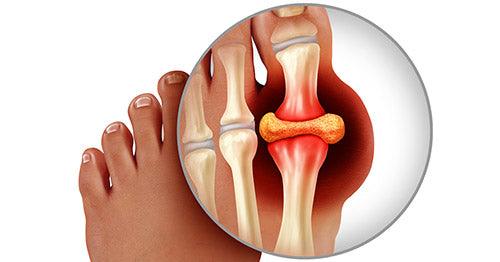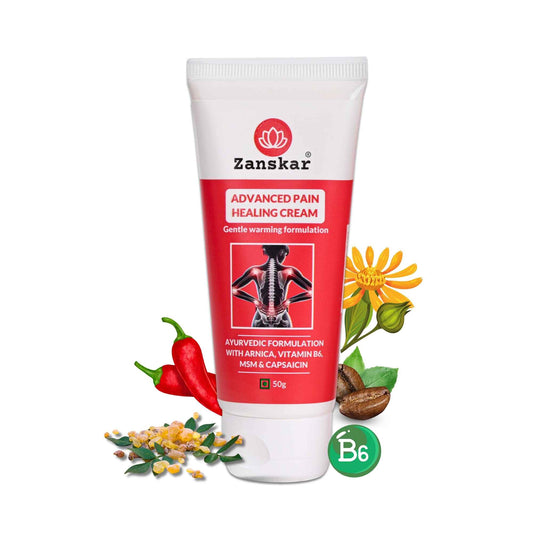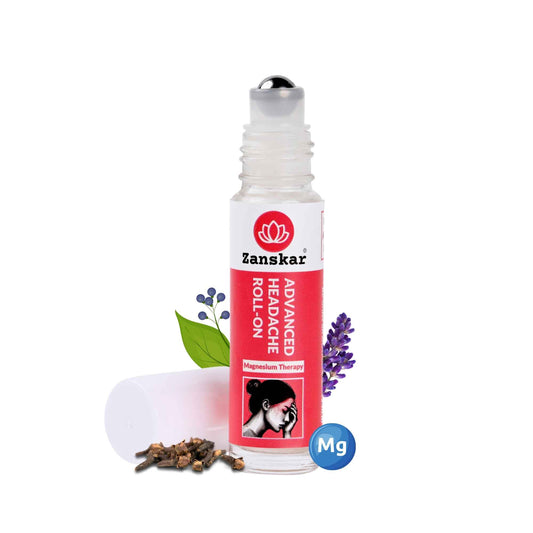
Living with Gout: A detailed perspective from Zanskar Health Experts

Gout is a form of inflammatory joint pain that causes pain and swelling in your joints. Gout happens when there’s a buildup of uric acid in your body. Gout most commonly affects your big toe joint. But it can affect other joints too, including your:
- Knees
- Ankles
- Feet
- Hands and wrists
- Elbows
CAUSES AND SYMPTOMS
1. What causes gout?
A buildup of excess uric acid in your body causes gout. Your body naturally makes uric acid when it breaks down chemicals called purines found in certain foods and drinks such as sugar, processed foods and red meat. Your kidneys usually filter uric acid out of your blood, and then it leaves your body when you pee. Sometimes your body makes too much uric acid, or your kidneys don’t remove it from your blood fast enough. When your body has high levels of uric acid (hyperuricemia), uric acid crystals can build up and settle into your joints. The sharp crystals clump together and cause sudden episodes of pain, swelling and other symptoms.
Having temporarily high uric acid levels doesn’t mean you’ll definitely develop gout. Many people with hyperuricemia never get gout. Other common risk factors are: hereditary, high alcohol consumption and immunosuppresant intake.
2. What are its symptoms?
Gout attacks are very painful and can happen suddenly, often overnight. During a gout attack, symptoms in your affected joints may include:
- Intense pain
- Discoloration or redness
- Stiffness
- Swelling
- Tenderness, even to a light touch (like a bedsheet covering your affected joint)
- Warmth, or a feeling like the joint is “on fire”
3. How long does a gout attack last?
Gout attacks usually last a week or two. You might have some flares that last longer than others, and some might cause more severe symptoms. Between attacks, you might not experience any gout symptoms.
MANAGEMENT AND TREATMENT
1. How is gout treated?
Treating gout is usually a combination of managing your symptoms during a flare and reducing how often you consume high-purine foods and drinks as well as exercises to improving joint mobility and muscle mass.
2. Exercise Is Important When You Have Gout
During a gout attack, when you have swollen, painful joints, exercise may be the last thing on your mind—and that’s okay. In fact, resting is one of the best things you can do for your body during a gout attack. You want to avoid moving the affected joints as much as possible. Applying ice to your painful joints for about 20 minutes at a time will help reduce swelling.
“Should I walk or engage in any exercise when I have gout?” Many people with gout ask themselves this question. And the answer is yes — except during a painful gout flare, according to a consulting physiotherapist at Zanskar Health with a primary focus in rheumatology.
When you are living with gout, a lack of exercise can cause a vicious cycle that worsens the painful effects of the condition. Gout makes your joints hurt and so you may not feel like exercising, thinking it will make the pain worse.
However, a lack of exercise can make you less flexible, weaken your muscles and joints, and can result in bone loss. Exercise can help you keep you to manage your gout and promote faster healing. The right exercises can reduce pain and boost your energy. Exercising can also keep you in shape by helping you to maintain a healthy body weight and build healthy bones, joints, and muscles.
The right exercises can even help reverse the effects of gout. It will also build more muscle, increase bone density and boost your overall level of fitness. Regular exercise can make you will feel stronger and have more energy, putting you into better shape for coping with gout.
The Centers for Disease Control and Prevention note that doing joint friendly physical activity is important in improving gout-related pain.
Joint friendly activity is any activity that does not put too much stress on the joints and minimizes the risk of injury. Such activities may include:
- Low impact cardio (walking, cycling, swimming)
- Stretching
PREVENTION
Can I prevent gout?
The best way to prevent gout is to limit how often you consume high-purine foods and drinks. Make sure you drink plenty of water to help your kidneys function better and avoid dehydration.
Getting regular exercise can help reduce stress on your joints and reduce your risk for obesity and other health conditions that make you more likely to develop gout.
FAQs
1. What are the first signs of having gout?
A gout attack usually happens suddenly and without much warning. You’ll probably notice a sudden, intense pain in your affected joints. Gout attacks often develop overnight, so you might notice symptoms when you wake up in the morning. It’s common to go from having no symptoms to experiencing severe symptoms all at once during a gout attack.
2. What can I expect if I have gout?
If you have gout, you should expect to have flares of symptoms that come and go. Flares can happen more frequently if you don’t get gout diagnosed and treated by a healthcare provider.
Some people with gout experience more severe or more frequent attacks right after starting treatment as the uric acid in their body adjusts to new medications or changes in their diet.
3. Can gout be cured?
There’s no cure for gout. You’ll experience fewer attacks once you work with a healthcare provider to find treatments that manage your symptoms and lower your uric acid levels.
4. What’s the outlook for people with gout?
Most people with gout eventually find a combination of treatments and lifestyle tweaks to manage their symptoms and reduce how often they experience gout attacks. Gout is treatable, People who have a blood uric level lower than 6 mg/dL are much less likely to experience gout attacks.
However, untreated gout can lead to permanent joint damage.
5. When should I see my healthcare provider?
Visit a healthcare provider if you experience sudden intense pain in any of your joints, especially if your joint is also swollen and your skin is red or discolored. Gout shares many symptoms with infections that need to be treated right away. Talk to your doctor if you’re having more frequent gout attacks or if your symptoms are more severe than they used to be.
Learn More About Zanskar Health
If you have joint or muscle pain that makes it hard to move, Zanskar offers the most advanced full stack pain relief solutions for you.
Now available to purchase, Zanskar® Advanced Pain Healing Cream has a unique formulation of natural ingredients like Arnica, Vitamin B6, MSM and Capsaicin, which is trusted by over 20L+ pain sufferers globally. It provides lasting relief from muscle and joint discomfort that you can feel good about. Get your fix before stocks run out - buy now.
You can also gain access to therapeutic exercises and stretches for your condition by downloading the Zanskar Health physiotherapy mobile app. Additionally, you’ll have a personal care team to guide, support, and tailor our program to you, including behavioral and nutritional coaching.
Download our mobile app here 👉 download and track your exercise streak.
Medical Review: This article is written by Dr Nishtha Mittal (Senior Health Content Editor at Zanskar Health) and has been medically reviewed by Dr Rashi Goel (Senior Physiotherapist at Zanskar Health). This article and its contents are provided for educational and informational purposes only and do not constitute medical advice or professional services specific to you or your medical condition.







